|
|
Covid-19 – a pandemic that has not just triggered off a momentary existential crisis but a critical conversation of building sustainable businesses. The circumstantial experiment of remote working, a radical change in systems and processes, a significant transformation in the very way businesses are run, are the effects brought about by Covid-19.
The instinctive approach to handling any crisis is to adopt a conservative attitude – in this scenario, with respect to spending or costs incurred. Extensive furloughs vs. no-layoff pledges, Offers revoked vs. Offers honored – it is this dichotomy or the quintessential middle ground which is a no promotion/salary hike situation, that is prevalent across organizations today.
The central theme behind organizations adopting such measures is clearly cost optimization, or in other words, cost takeout. So, how can organizations implement cost takeout and keep the grind going, and smoothly so? There are three critical cost levers that enable organizations to achieve up to 20% cost savings, and the ensuing sections will talk about these three cost levers.
The remote working experiment is working, proving that the collocation of teams is not required. This in turn is nudging organizations to explore the possibilities of teams that can be dynamically redesigned and geographically distributed, in order to ensure business continuity. In light of the current situation, there are three cost levers that organizations should be focusing on are:
According to a Zinnov survey conducted on 50 PE and PE-owned software companies in the first half of April 2020 (when COVID was at its peak in the US), 96% of companies surveyed said that they were thinking of cash/cost optimization. Of these, 55% said they were considering optimizing R&D costs through establishing new global R&D centers at low-cost locations or increasing talent at current centers or with global outsourcing partners.
Hence, globalization is an essential cost lever that organizations are considering to implement cost takeout. Implemented right, this lever helps organizations save as much as 15-20% in costs.
When we look at the benefits brought forth by globalization, the primary ones from a cost takeout and resource optimization standpoint include alignment of roles and skills to the current business needs, optimization of global talent and location strategy, and redistribution of talent from a high-cost location to a low-cost location.
COVID-19 has brought about a fundamental shift in terms of the skills and roles in demand. For example, organizations are beginning to appreciate corporate and business functions with an increased focus on competencies like ‘digital candidate engagement’ and ‘remote work management.’ The crisis has even brought about a transformation in the cybersecurity taxonomy, clearly demarcating the job roles of a security engineer versus a privacy engineer. Several sales roles are now being reimagined to fit the current construct. Given the dynamicity of the business requirements, globalization plays a critical role in aligning roles and skills with the same.
Here’s an illustration of how the talent pool of organizations can be relooked at, with a comparison of the current and the desired profiles of a database developer.
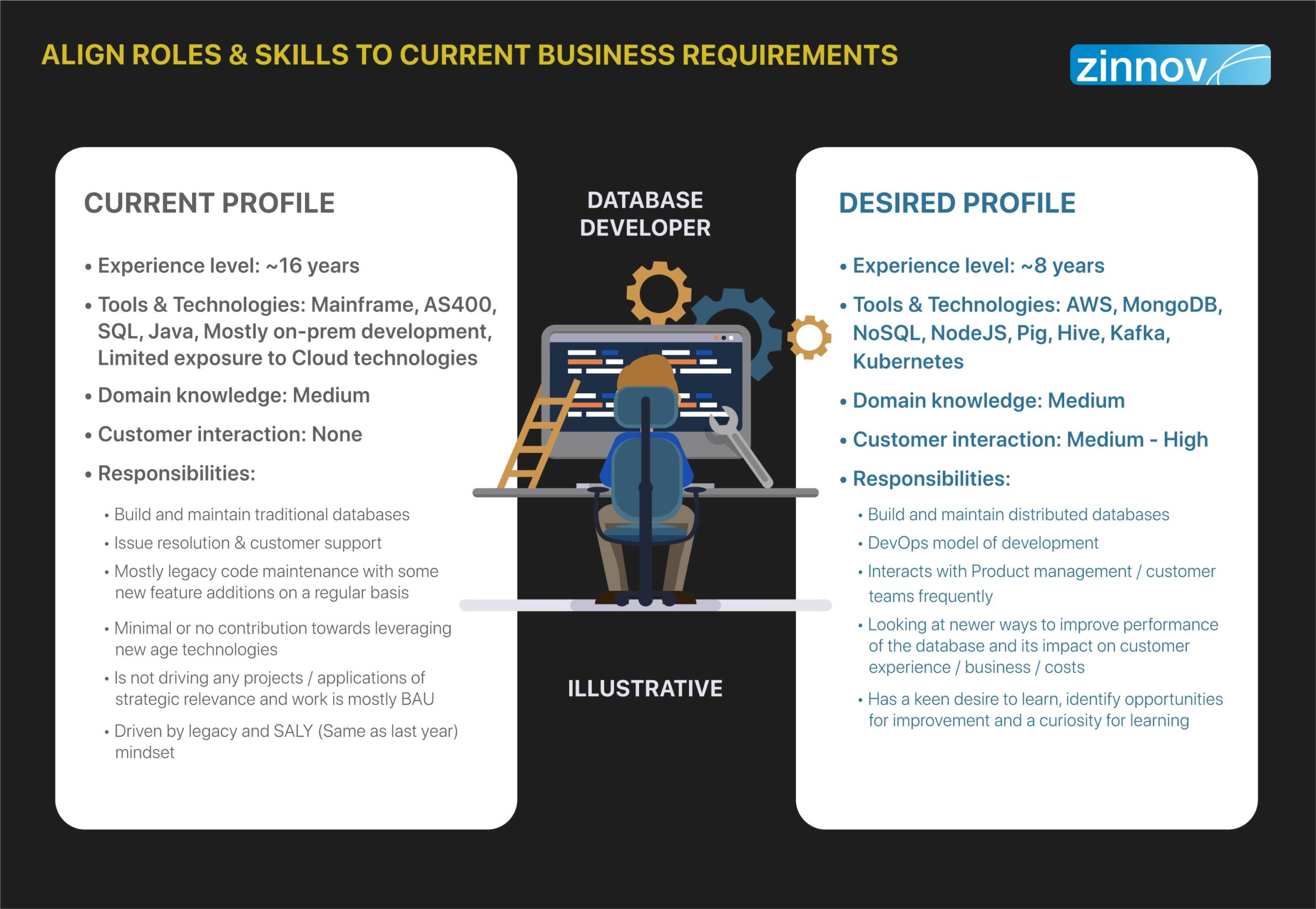
A critical conversation that the crisis has brought forth is business continuity to minimize the impact on customer service as well as on revenues. Having globally distributed, mature teams eliminates the dependency on one particular location to keep the engine running. So moving away from the conventional approach of global centers being leveraged just for cost arbitrage, and vesting them with a significant level of leadership, accountability, and ownership plays a critical role in ensuring business continuity.
The following image depicts two approaches to globalization – the one on the left indicates a scenario where the teams are globally distributed, but with less maturity. This is the typical approach to globalization where the focus is on staff augmentation or cost arbitrage. The scenario on the right talks about the focus on increasing the maturity of the global centers by enhancing the scope of decision-making, autonomy with respect to product design and management, and vesting the global teams with accountability, productivity, and expertise rather than looking at them as mere staff augmentation and cost arbitrage centers.
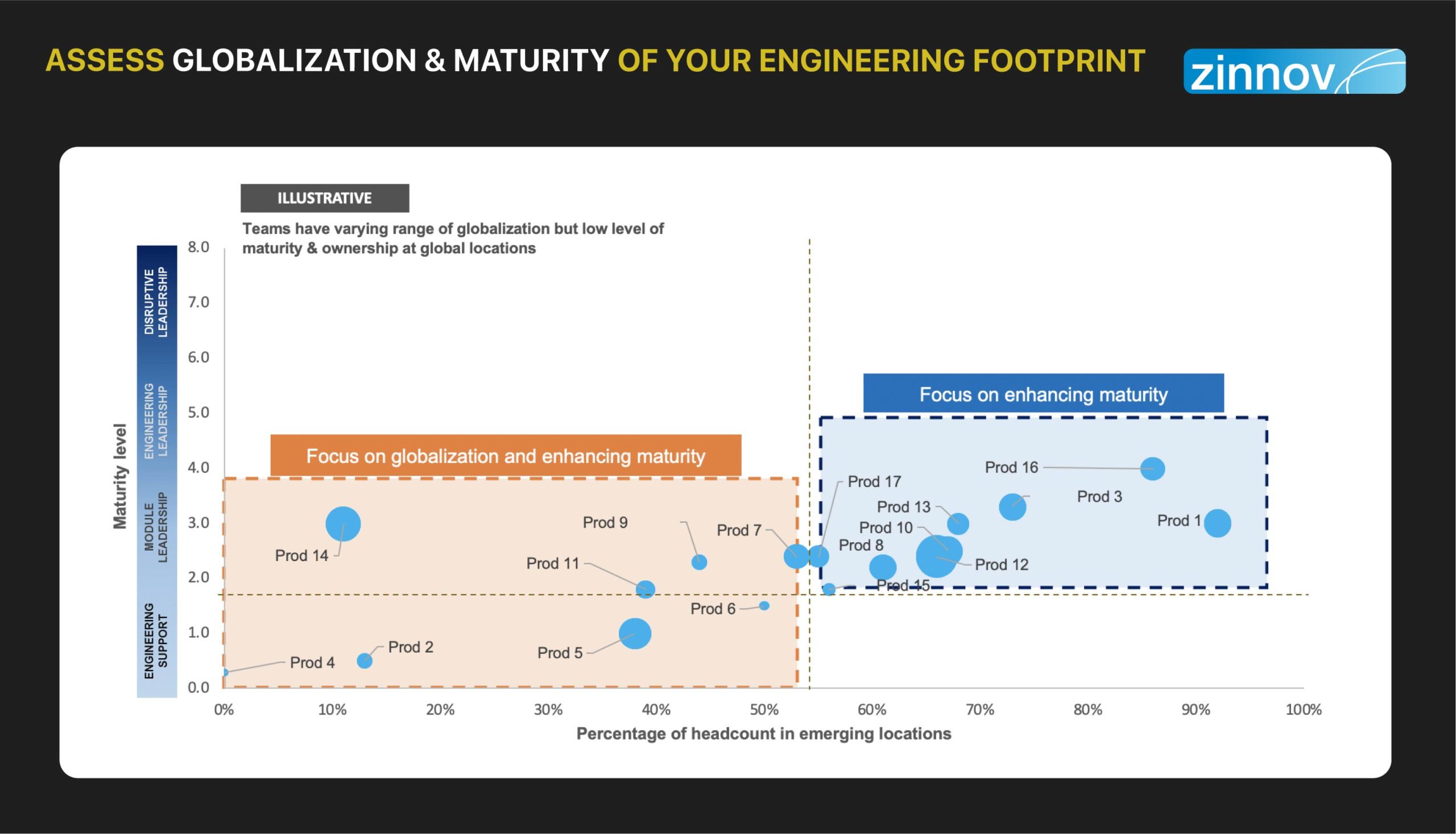
The ideal place to be is to go higher on both the global distribution of teams as well as their maturity, and increase the portfolio of programs in that zone as indicated in the image below.
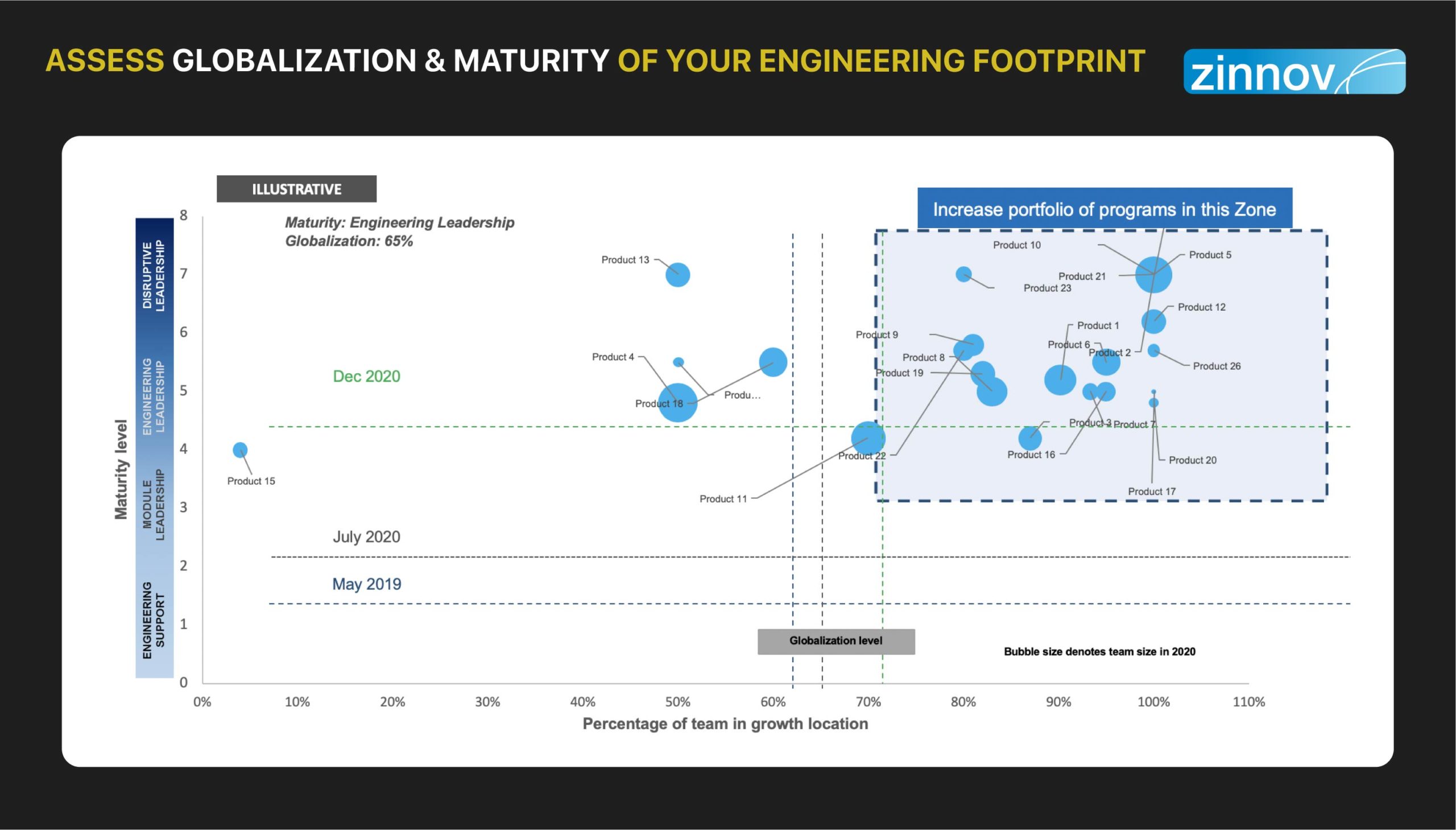
COVID-19 has helped leapfrog completely remote operations to ensure business continuity. This brings forth the possibility of reducing talent migration to known talent hotspots such as Silicon Valley, Shanghai, or Bangalore, and tap into the talent available in smaller cities and towns as well. This serves the purpose of cost arbitrage while reducing the density in the top cities/high-cost locations.
The following image depicts an example of rebalancing the headcount between high-cost and low-cost locations, thereby reducing the overall headcount and benefitting from the resultant cost savings.
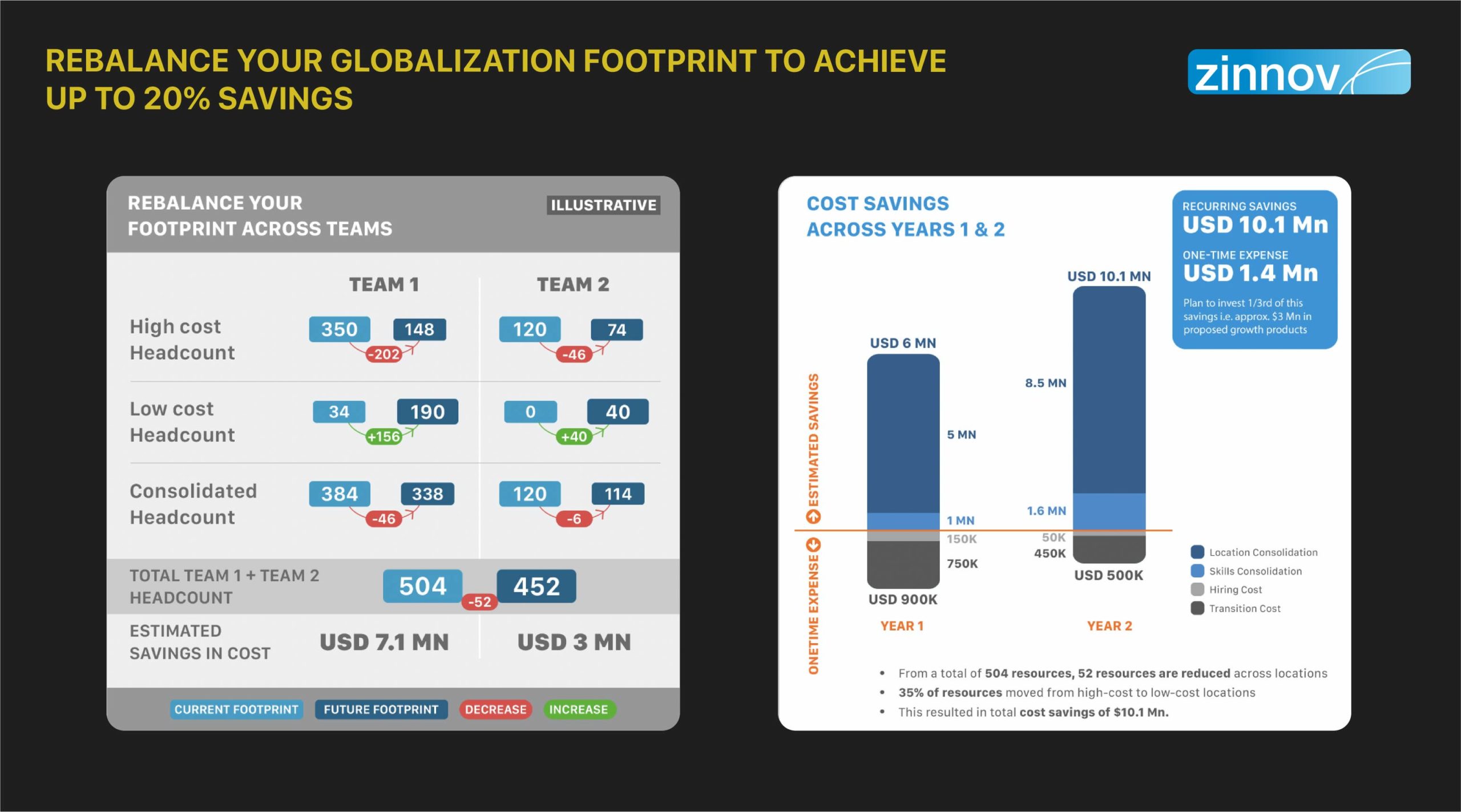
Organizations today, work with multiple outsourcing partners for various purposes. They might collaborate with a vendor with expertise in a niche skill/technology, or bring on board a fresh set of vendors that the new leadership had been working with. There are situations wherein there are multiple vendors being leveraged for the same purpose. So, the critical question here is, “Are organizations deriving true value from the vendors?” Therefore, effectively managing vendors and identifying the right portfolio is key to efficiently implementing cost takeout with respect to outsourcing. The common challenges in vendor management are ineffective vendor engagement, lack of productivity metrics, incorrect work portfolio, and legacy engagement models.
The following are the five key elements to achieve maximum cost savings through an effective outsourcing model –
(a) Consolidate Vendors: Classify activities across strategic, preferred, and niche vendors based on the complexity and capability of vendors.
(b) Redefine Engagement models: Adopt newer engagement models such as revenue share, risk/reward, and managed services for a different set of activities.
(c) Clear Pricing models: Have a well-defined pricing model based on the nature of activities that can increase cost savings over a period.
(d) Revisit In-house vs. Outsourced portfolio: Get the right balance of in-house versus outsourced portfolio based on the strategic importance of the work and phases of the Product Development Lifecycle (PDLC).
(e) Manage and Govern: Define a comprehensive control set for better vendor governance and management.
Effective vendor management can result in cost savings of up to 10-15%.
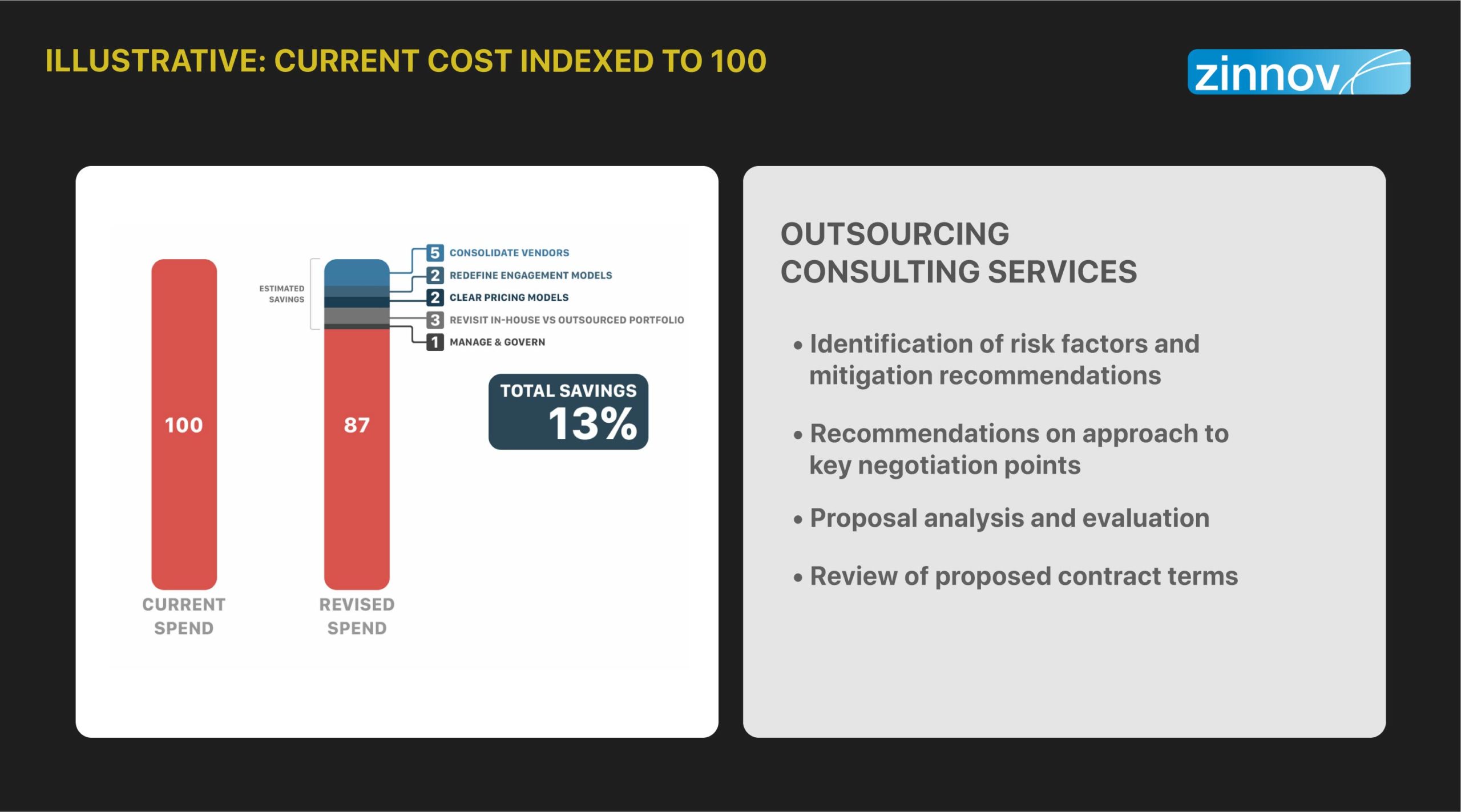
There are multiple instances where companies invest in products that are not generating significant revenues or exhibiting promising growth. Therefore, revisiting the product portfolio is a critical step in the cost takeout strategy.
An approach to evaluate the products in the portfolio and their strategic importance to the organization is to plot the products’ maturity across different stages as shown in the image below. A few key questions to be asked are, ‘What is the revenue generated by the product?’, ‘What is the growth of the project?’, ‘Is it strategic?’, ‘What is the technology – is it legacy technology that the organization would like to continue to invest in?’, ‘What are the cost and margin pressures?’, etc.
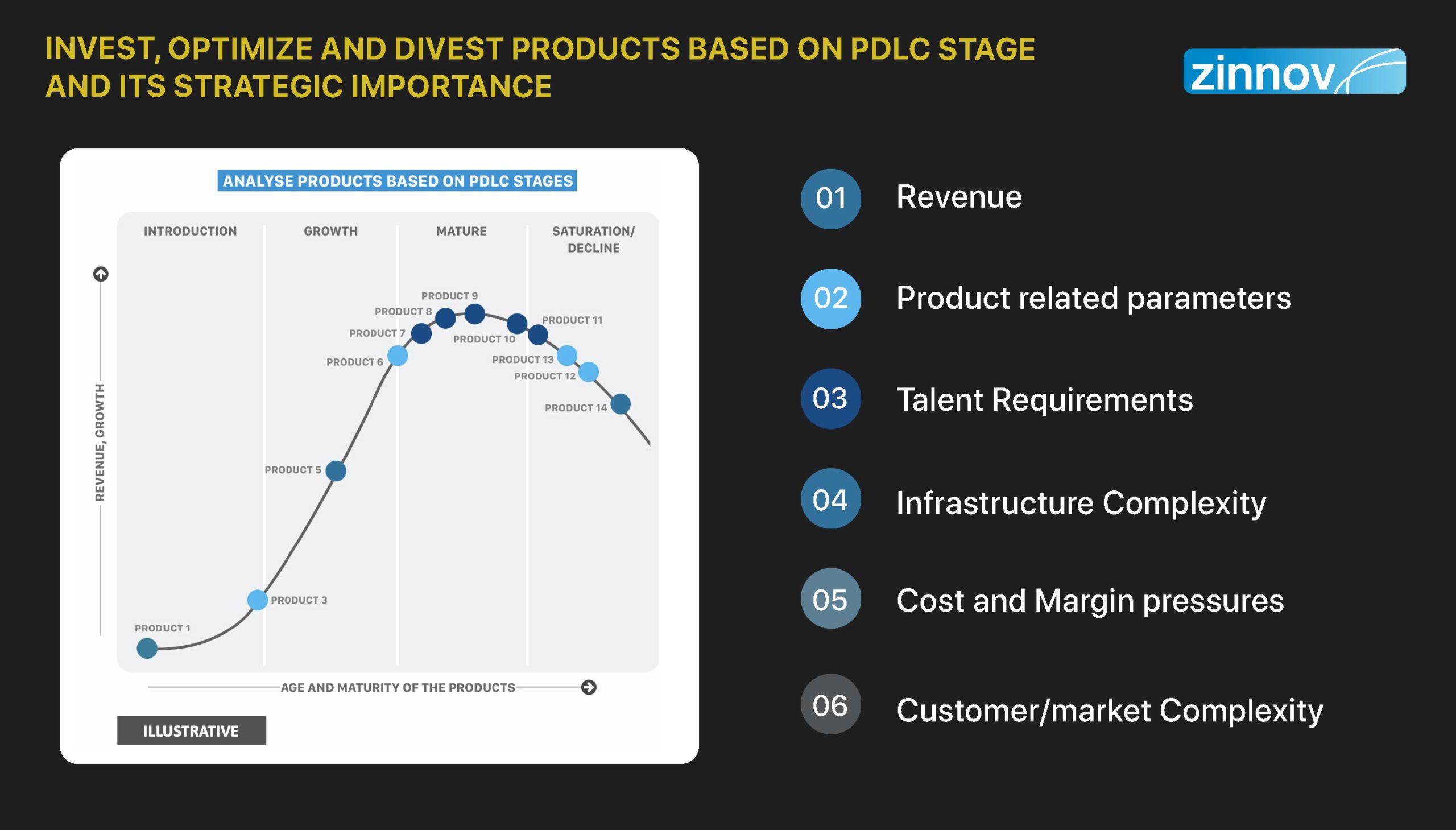
A careful evaluation of the following factors is critical to decide on the products that an organization would want to divest, optimize their spend on, or invest in.
(a) Revenue: The current revenue base of the product, the dependency associated with the product, the growth that the product has exhibited in the past five years, and the future projection, are to be considered to understand the criticality of a product in the portfolio.
(b) Product-related parameters: The complexities involved in the product roadmap for the future and the volume of customer support issues are also key factors to be considered while optimizing the product portfolio.
(c) Talent requirements: The cost of the talent involved in the development and management of a product, the domain knowledge possessed, and the customer interactions are to be factored in.
(d) Infrastructure complexity: The investment that goes into the infrastructure that includes dedicated labs, networks, support teams are to be considered while approaching product portfolio optimization.
(e) Cost and Margin pressures: The costs incurred and the margins involved in delivering, maintaining, and supporting the product is a critical area of focus while evaluating a product. The outsourcing costs and the costs involved in migration are to be factored in to decide on investing in or divesting a product in the portfolio.
(f) Customer/Market complexity: The Net Promoter Score (NPS), which is a parameter that gauges the customer loyalty extended towards a product, is a factor to be looked at while evaluating the value derived from a product. The size of the customer base for a product, the next-gen solutions, and the competition overview are the other complexities that are to be considered in product portfolio optimization.
Post evaluation of the above factors, organizations need to classify the products into categories – invest, divest, and optimize. This optimization exercise helps organizations achieve up to 10-15% in cost savings.
With the formerly inconspicuous cost optimization conversations gaining increasing focus in light of COVID-19, organizations should be quick to leverage multiple channels, adopt robust strategies, optimize costs, and build sustainable businesses that stand the test of time.